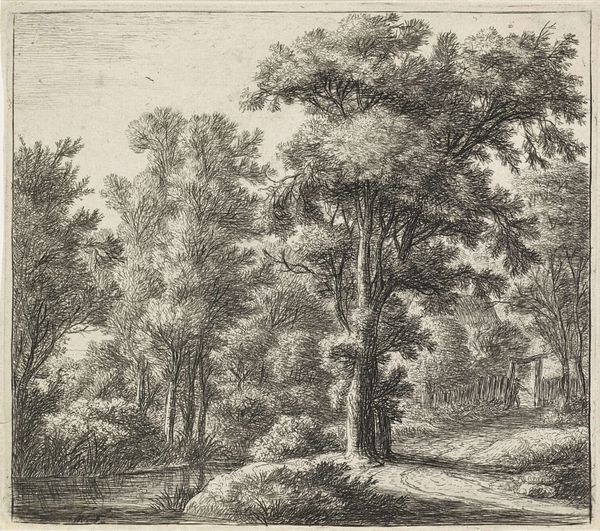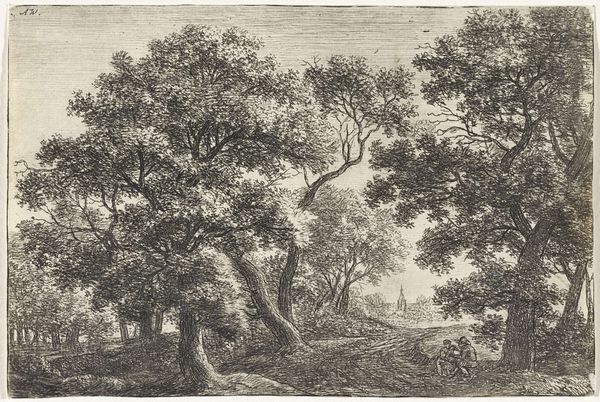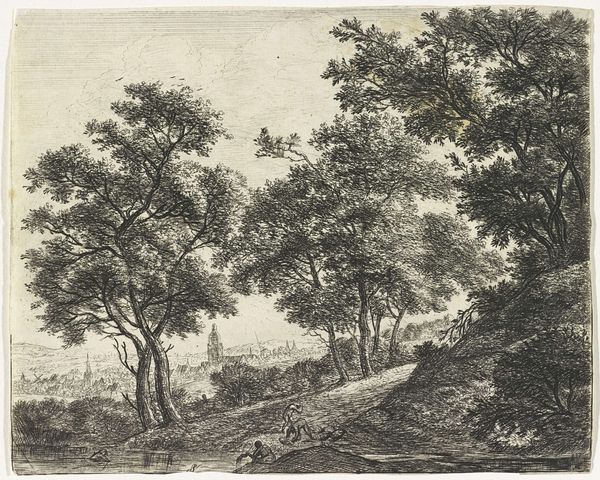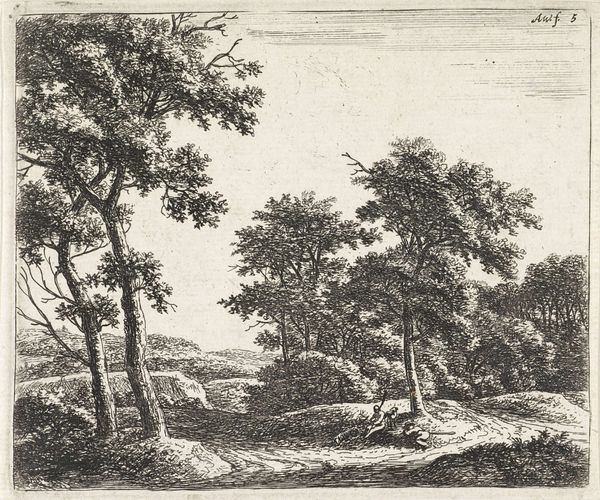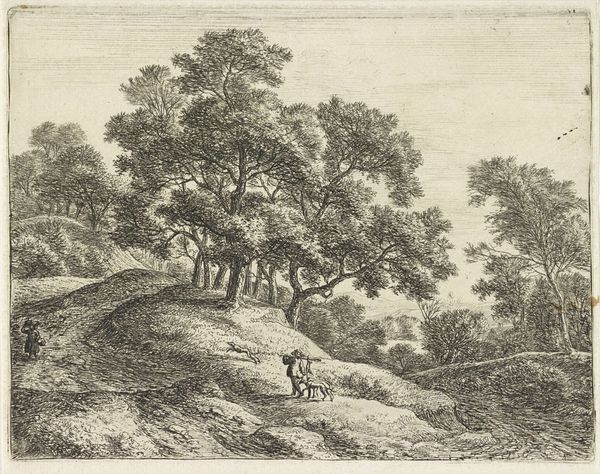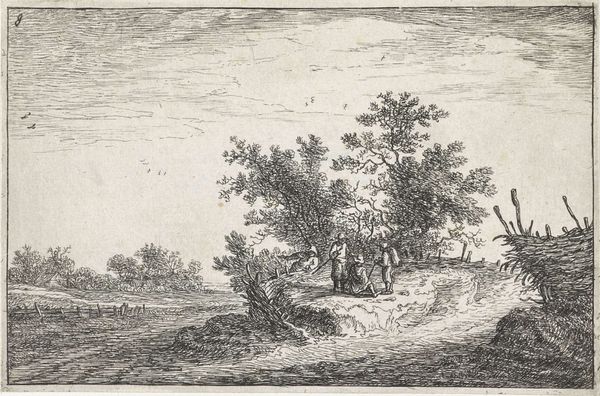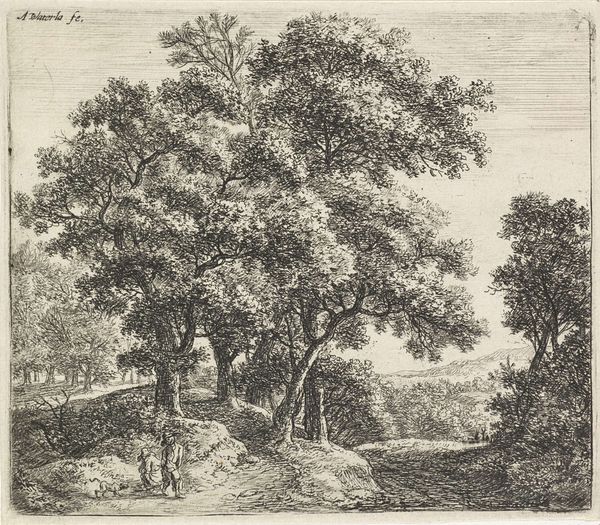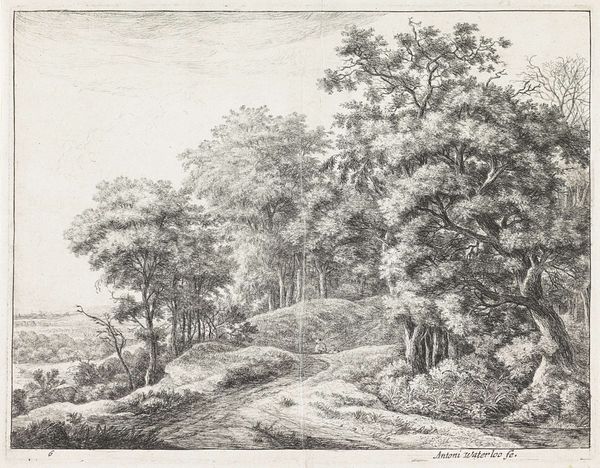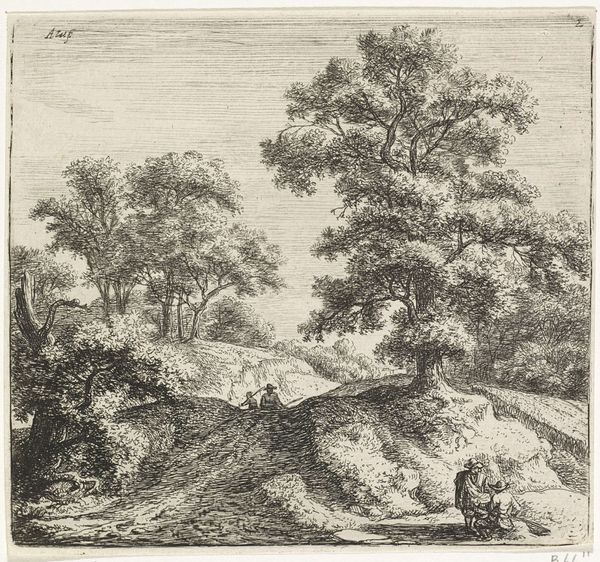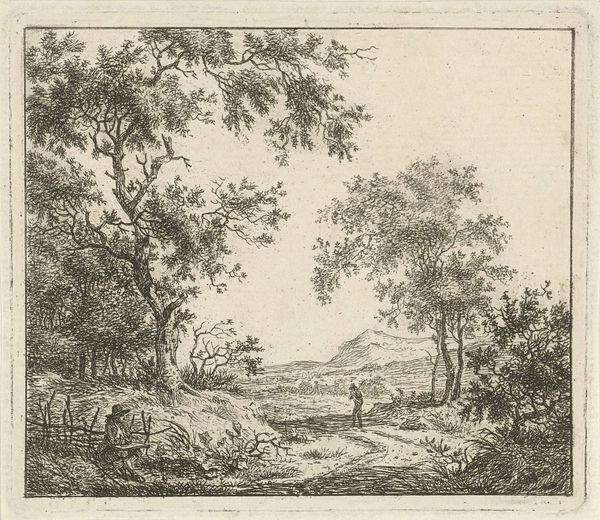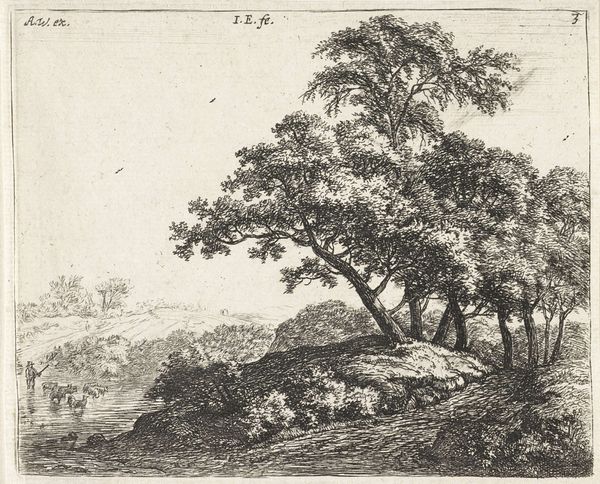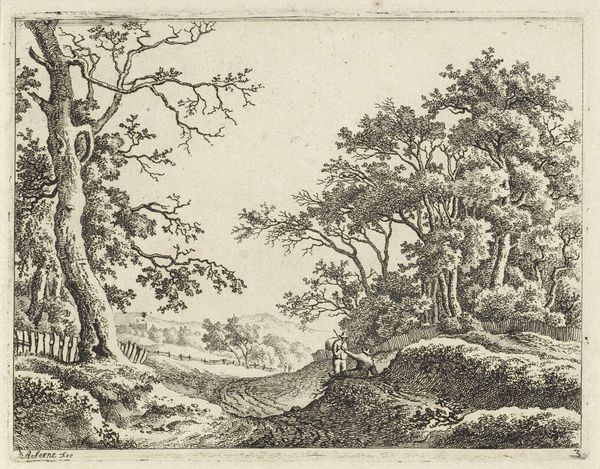
drawing, print, etching, intaglio
#
drawing
#
dutch-golden-age
# print
#
etching
#
intaglio
#
landscape
#
etching
#
realism
Dimensions: height 94 mm, width 145 mm
Copyright: Rijks Museum: Open Domain
Editor: Here we have Anthonie Waterloo’s "Huis aan een pad op een heuvel", or "House on a Path on a Hill," likely etched sometime between 1630 and 1672. I find it quite charming! The scene feels very calm and inviting, and I am curious about the cultural significance of this depiction. What’s your take on it? Curator: Well, first off, 'charming' is spot on. Waterloo had a knack for making the ordinary seem poetic. The etching is from the Dutch Golden Age, so landscape became more than just a backdrop; it was about national identity, a source of pride. Notice how the house, humble as it is, is elevated on the hill. It is literally and figuratively a central image. What does that positioning suggest to you? Editor: Maybe that domestic life was being put on a pedestal? I'm struck by the ordinary scene of daily life made exceptional in its detail and execution. Curator: Precisely! Think about the Dutch Republic at the time – a new nation finding its feet, literally building itself up, claiming land from the sea! Waterloo's details are incredible; he could make dirt seem like silk with his etching technique. Editor: I never considered landscape as political! It’s so interesting to think of art being reflective of that time and society. It really transforms how I view landscapes in general. Curator: Isn't it marvelous how art invites us to re-see, re-feel? An etching like this reminds us that even the most unassuming scene can echo deeper cultural currents and our own human story.
Comments
No comments
Be the first to comment and join the conversation on the ultimate creative platform.
